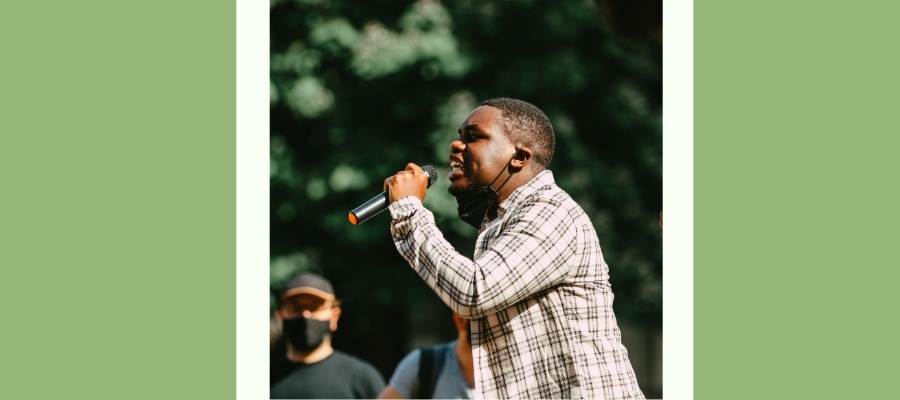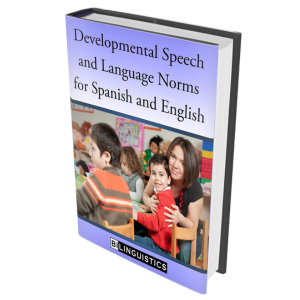Here I am again with a client who stutters. That last group I had was SOOOO successful. Where did I put those materials though? I’m going to share some materials here that are focused on fluency shaping techniques for clients who want to work on those. I acknowledge that this is not the approach that we would take if it was not a personal goal for our client. It feels like when I do have a client who wants to work on increasing their fluency, three things happen:
- I need to brush up on fluency shaping techniques and stuttering modification techniques.
- I need to translate and or share Spanish stuttering therapy techniques.
- I have to search for new strategies for quite a while because professionals rename fluency techniques to make more sense to parents and children. This makes complete sense and we should do this. However, trying to research which stuttering therapy techniques are successful is hard when we are all calling them different things.
So that’s what this essay is about. Below are consolidated lists of English and Spanish stuttering therapy techniques with downloads created as pdfs for you (and me!) to run with next time a bilingual stuttering client comes your way.

Stuttering Modification Strategies
A.k.a. = Stuttering Therapy Techniques to Use During a Stuttering Event
Modification strategies involve using stuttering therapy techniques that focus directly on the stuttering. These strategies help students to increase awareness of stuttered speech, examine and reduce physical tension, and ultimately change moments of stuttering. They help children to reduce struggle behaviors and stutter in a more relaxed way. Modification stuttering therapy techniques can also:
- Decrease sensitivity about stuttering
- Reduce negative reactions
- Increase feelings of control, openness, and acceptance
Remember that the list below and the wording may only make sense to speech language pathologists. Feel free to rename any strategy you master and share into user-friendly language. Stuttering modification strategies are often renamed include techniques such as Catching the Stutter, Relaxing the Stutter, Slide, Easy Stuttering, and Cancellation.
What are Stuttering Modification Techniques?
| Cancellations | After stuttering, there is a pause and the word is said a second time using an “easy” stutter. |
| Pull-outs | When a person begins to stutter, they are to say the rest of the word with ease. |
| Preparatory set techniques | When the person anticipates a word to be difficult, they are encouraged to work through all sounds of the word slowly and calmly. |
Fluency Shaping Techniques
A.k.a. = Stuttering Therapy Techniques to Practice Beforehand, for When a Stuttering Event Occurs
Fluency shaping strategies include stuttering therapy techniques that alter students’:
- Breathing
- Speech rate
- Voice production
- Articulation
When children experience more fluency, they often develop greater confidence about speaking. This can decrease negative reactions and promote even more fluency. Fluency shaping techniques include strategies that are also called: Relaxed Breath, Slow Stretched Speech, Smooth Movement, Easy Voice, Light Contact, and Stretched Speech.
What are Fluency Shaping Technique?
| Easy Onset | Begin speech slower with less tightness and slighter softer speech. |
| Stretching | Slightly stretch the beginning sound to ease speech. |
| Light Contacts | “Touch” the articulators together lightly and softly. |
| Pausing and Chunking | Grouping words together and adding pauses in places where natural breaks occur. |
| Cancellation | After stuttering, wait a few seconds and produce the word again in an easier manner. |
| Pullout | Catch yourself in the moment of stuttering and ease yourself out of it. |
| Preparatory Set | Anticipate what will be stuttered and begin the first sound of the word slowly, smoothly, and easily. |
| Bouncing | Repeating a word or sound in an easy way to decrease tension and become comfortable. |
| Full Breath Target | Inhale through the mouth in a relaxed manner. |
| Gentle Onset Target | Full Breath target then exaggerate the initiation of the sound/words. |
Spanish Stuttering Therapy Techniques: Modification
Estrategias de modificación de la tartamudez
También conocido como = Técnicas de terapia de tartamudeo para usar durante un evento de tartamudeo
Las estrategias de modificación implican el uso de técnicas de terapia de tartamudez que se centran directamente en la tartamudez. Las técnicas de terapia de tartamudez de modificación también pueden:
- Disminuir la sensibilidad a la tartamudez
- Reducir las reacciones negativas
- Incrementa los sentimientos de control, apertura y aceptación
Tratamiento y técnicas de intervención directa en tartamudez – La modificación
| Cancellations | Las cancelaciones | Después de tartamudear, hay una pausa y la palabra se dice por segunda vez usando un tartamudeo “fácil”. |
| Pull-outs | Las extracciones | When a person begins to stutter, they are to say the rest of the word with ease. |
| Preparatory set techniques | Técnicas de práctica preparatoria | Cuando la persona anticipa que una palabra será difícil, concéntrese en cada sonido de la palabra lenta y calmadamente. |
Spanish Stuttering Therapy Techniques: Fluency Shaping
Técnicas para moldear la fluidez
También conocido como = Técnicas de terapia de tartamudeo para practicar de antemano, para cuando ocurre un evento de tartamudeo
Las estrategias para moldear la fluidez incluyen técnicas de terapia de la tartamudez que alteran:
- La respiración
- El nivel de conversación
- La producción de voz
- La articulación
Tratamiento y técnicas de intervención directa en tartamudez – Aumentar la fluidez
| Easy Onset | Inicio suave | Empiece a hablar más despacio con menos tensión y un habla más suave. |
| Stretching | Estirar | Estire ligeramente el sonido inicial para facilitar el habla. |
| Light Contacts | Contactos ligeros | “Toque” los articuladores juntos con suavidad y suavidad. |
| Pausing and Chunking | Pausar y fragmentar | Agrupar palabras y agregar pausas en lugares donde ocurren rupturas naturales. |
| Cancellation | Cancelación | Después de tartamudear, espere unos segundos y vuelva a producir la palabra de una manera más fácil. |
| Pullout | Extraerse | Detente en el momento de la tartamudez y libérate de la tartamudez. |
| Preparatory set | Práctica preparatoria | Anticipe lo que se tartamudeará y comience el primer sonido de la palabra de manera lenta, suave y fácil. |
| Bouncing | Rebote | Repetir una palabra o un sonido de una manera fácil para disminuir la tensión y sentirse cómodo. |
| Full Breath Target | Objetivo de respiración completa | Inhale por la boca de manera relajada. |
| Gentle Onset Target | Objetivo de inicio suave | El objetivo de respiración completa luego exagera la iniciación de los sonidos / palabras. |
Resources
Here is a link for some materials on the Stuttering Foundation website: Spanish Translated Materials
If you don’t have these two yet, they are amazing downloads:
Cluttering Characteristics, and Resources
Stuttering/Disfluency Causes, Diagnosis, Treatment Options, and Resources
More reading:




Hi Scott,
I’ve been looking for an answer to this question myself for a while. Apparently, there is no literal translation for “bumpy” in Spanish. As a native Spanish speaker, the translations that are out there don’t make any sense to me. So, for now I’m using “habla fluida” and “habla picada” to use a reference to water. I think it’s easy for my students to understand using visuals of a boat in choppy water and calm water.
Hi Karina,
Thanks for these ideas. I also added a link to some translated materials on the National Stuttering Foundation website.
Best,
Scott